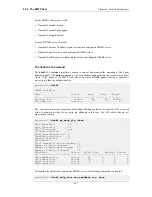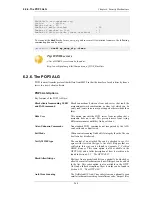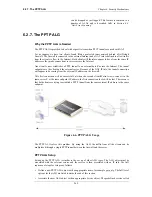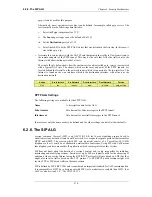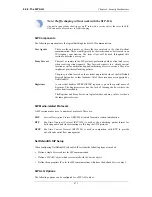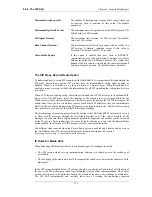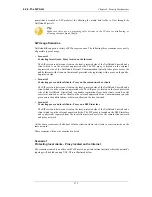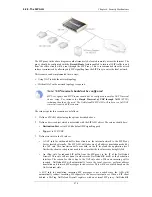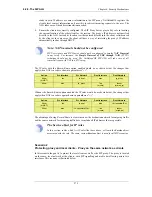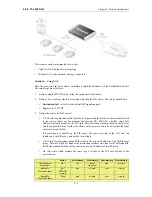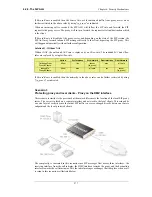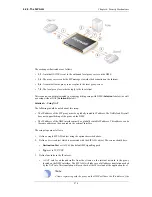
Note: Traffic shaping will not work with the SIP ALG
Any traffic connections that trigger an IP rule with a service object that uses the SIP
ALG cannot be also subject to traffic shaping.
SIP Components
The following components are the logical building blocks for SIP communication:
User Agents
These are the end points or clients that are involved in the client-to-client
communication. These would typically be the workstation or device used in an
IP telephony conversation. The term client will be used throughout this
section to describe a user agent.
Proxy Servers
These act as routers in the SIP protocol, performing both as client and server
when receiving client requests. They forward requests to a client's current
location as well as authenticating and authorizing access to services. They also
implement provider call-routing policies.
The proxy is often located on the external, unprotected side of the NetDefend
Firewall but can have other locations. All of these scenarios are supported by
NetDefendOS.
Registrars
A server that handles SIP REGISTER requests is given the special name of
Registrar. The Registrar server has the task of locating the host where the
other client is reachable.
The Registrar and Proxy Server are logical entities and may, in fact, reside on
the same physical server.
SIP Media-related Protocols
A SIP session makes use of a number of protocols. These are:
SDP
Session Description Protocol (RFC4566) is used for media session initialization.
RTP
Real-time Transport Protocol (RFC3550) is used as the underlying packet format for
delivering audio and video streaming via IP using the UDP protocol.
RTCP
Real-time Control Protocol (RFC3550) is used in conjunction with RTP to provide
out-of-band control flow management.
NetDefendOS SIP Setup
When configuring NetDefendOS to handle SIP sessions the following steps are needed:
•
Define a single Service object for SIP communication.
•
Define a SIP ALG object which is associated with the Service object.
•
Define the appropriate IP rules for SIP communications which use the defined Service object.
SIP ALG Options
The following options can be configured for a SIP ALG object:
6.2.8. The SIP ALG
Chapter 6. Security Mechanisms
271
Summary of Contents for DFL-1600 - Security Appliance
Page 27: ...1 3 NetDefendOS State Engine Packet Flow Chapter 1 NetDefendOS Overview 27 ...
Page 79: ...2 7 3 Restore to Factory Defaults Chapter 2 Management and Maintenance 79 ...
Page 146: ...3 9 DNS Chapter 3 Fundamentals 146 ...
Page 227: ...4 7 5 Advanced Settings for Transparent Mode Chapter 4 Routing 227 ...
Page 241: ...5 4 IP Pools Chapter 5 DHCP Services 241 ...
Page 339: ...6 7 Blacklisting Hosts and Networks Chapter 6 Security Mechanisms 339 ...
Page 360: ...7 4 7 SAT and FwdFast Rules Chapter 7 Address Translation 360 ...
Page 382: ...8 3 Customizing HTML Pages Chapter 8 User Authentication 382 ...
Page 386: ... The TLS ALG 9 1 5 The TLS Alternative for VPN Chapter 9 VPN 386 ...
Page 439: ...Figure 9 3 PPTP Client Usage 9 5 4 PPTP L2TP Clients Chapter 9 VPN 439 ...
Page 450: ...9 7 6 Specific Symptoms Chapter 9 VPN 450 ...
Page 488: ...10 4 6 Setting Up SLB_SAT Rules Chapter 10 Traffic Management 488 ...
Page 503: ...11 6 HA Advanced Settings Chapter 11 High Availability 503 ...
Page 510: ...12 3 5 Limitations Chapter 12 ZoneDefense 510 ...
Page 533: ...13 9 Miscellaneous Settings Chapter 13 Advanced Settings 533 ...











